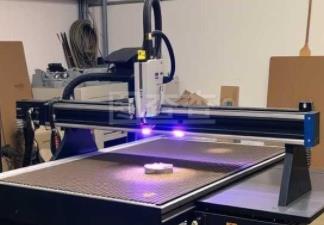Plasma cutting challenges mainly stem from its high-hea nature, leading to low precision and large heat-affected zones (HAZ)
Cutting Accuracy and Surface Quality
Problem: The plasma arc forms a “V” shape, producing bevels on the cut edge. High-temperature melting also causes rough surfaces and slag.
Consequence: Parts usually require grinding or milling before assembly, increasing labor and cost.
Large Heat-Affected Zone (HAZ)
Problem: Extremely high arc temperatures affect surrounding material.
Consequence: Changes in metal microstructure can cause hardening, micro-cracks, and deformation, negatively impacting mechanical properties.
Solution: Heat input control and forced cooling. Use precise parameter databases or submerged plasma cutting to reduce HAZ.
Noise, Fumes, and Arc Light
Problem: Plasma cutting generates high noise (>100 dB), metal fumes, and strong arc light.
Solution: Integrated dust extraction, enclosed cutting rooms, and PPE including helmets, ear protection, and respirators.
Frequent Consumable Replacement
Problem: Electrodes and nozzles wear quickly.
Solution: Use high-quality consumables, automatic torch height control, and preventive replacement schedules.
Advanced Plasma Technologies
High Definition (HD) Plasma: Reduces bevel angle to <3°, produces smooth, slag-free edges.
Water-Injected Plasma: Compresses and cools the arc, reducing HAZ and fumes.
Bevel Cutting Torch: Adjusts angle during cutting, producing weld-ready bevels in one pass.
Waterjet Cutting Challenges and Solutions
Waterjet cutting challenges mainly relate to cost, speed, and the properties of water itself.
High Operating Costs
Problem: Abrasive media (e.g., garnet) is consumable, with cost >70% of running expenses. High-pressure pump parts require regular replacement.
Solution: Abrasive recycling systems, optimized delivery, and long-life consumables.
Slow Cutting Speed
Problem: Material is “eroded” by abrasive, making it the slowest method.
Solution: Dynamic five-axis cutting heads, multi-head systems, and optimized CAM paths to improve efficiency.
Tapered Cuts
Problem: High-speed water loses energy, creating a slight “V” shape.
Solution: Software taper compensation and dynamic five-axis heads maintain vertical cuts.
Edge Wetness
Problem: Porous materials may absorb water, leaving edges wet.
Solution: Bottom-up cutting, “dry” waterjet trials, parameter optimization, and low-temperature drying.
Complex Maintenance
Problem: Ultra-high-pressure systems (>4000 bar) require careful sealing.
Solution: Preventive maintenance and operator training.
Cutting Methods Comparison Table
| Challenge Type | Laser Cutting | Plasma Cutting | Waterjet Cutting |
|---|---|---|---|
| Material Limitation | Hard-to-cut reflective metals (Cu, Al) | Conductive metals only | Almost unlimited |
| Quality Issue | Poor edge on thick plates | Low precision, bevels, slag | Tapered, edges may be wet |
| Efficiency | Slow on thick plates | Fast on thick plates but needs post-processing | Slow for all materials |
| Cost Concern | High equipment & gas cost | High post-processing cost | High abrasive cost |
| Environmental Impact | Fumes | Noise, fumes, arc light | Wastewater, abrasive sludge |
| Maintenance Challenge | Precise optics | Frequent consumables replacement | High-pressure system maintenance |
Solutions Summary
| Problem | Core Solution |
|---|---|
| Plasma bevel/quality | Upgrade to HD Plasma, use bevel cutting torch |
| Plasma HAZ | Optimize parameters, use submerged plasma |
| Plasma pollution | Integrated dust collection, enclosed cutting room |
| Waterjet high cost | Abrasive recycling, long-life consumables |
| Waterjet slow speed | Five-axis dynamic heads, optimize CAM path |
| Waterjet taper | Software taper compensation, dynamic five-axis heads |
| Waterjet wet edges | Bottom-up cutting, optimize parameters, post-dry |
Note: No cutting method is perfect. The key is balancing cost, efficiency, and quality based on your priorities, leveraging the above solutions to mitigate weaknesses.



